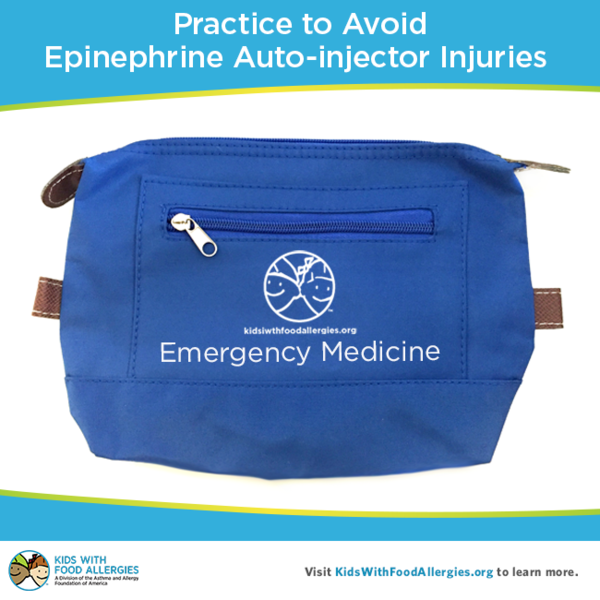
A recent study looked at rare but potential issues you should be aware of with epinephrine auto-injectors. Problems can happen if a child kicks while the needle of an epinephrine auto-injector is in his or her leg. The needle can cut the child or it can get stuck in the leg.
The authors of this study used social media to identify cases where children were injured by epinephrine auto-injectors. The study authors sent emails to members of two emergency medicine discussion groups. They also posted on eight Facebook groups for parents of children with food allergies.
Using these methods, they identified 22 cases of injuries. Of these, 21 children and one nurse were hurt. In four cases, the needle got stuck in the child’s limb. Nearly all of these injuries happened because a child kicked his or her leg.
What does this mean for you and your child? Here’s what you need to know:
- These injuries are quite rare – The study did not identify how often injuries like this happen. It did not mention the many thousands of times that auto-injectors do not cause injuries. “In other words,” says Dr. David Stukus¹, a board-certified pediatric allergist, “22 scary examples shouldn’t cloud our judgement about the safety of these devices."
- The benefits outweigh the risks – Epinephrine is always the first-line treatment for serious allergic reactions. It saves lives. The risks of not using it are much greater than the risk of getting injured by the needle.
- Proper technique is important – In the case of a serious allergic reaction, epinephrine must be given as soon as possible. “However,” Dr. Stukus points out, “there is still enough time to ensure proper administration and safety.”
To help avoid injury:
- Place the child flat on their back.
- If just one adult is available, that person should firmly hold the child’s leg at, or just above, the knee with one hand. They should then use their other hand to use the auto-injector in the outer thigh of that leg.
- If more adults are available, one person should firmly hold both of the patient’s ankles to prevent kicking. Another person should stay near the child’s head to help keep them calm. The third person should use the auto-injector in the child’s outer thigh.
- Never re-insert an auto-injector needle. Each needle should only be used once. If the needle comes out of the leg before you finish, do not re-insert it. If you think the dose was not given, use a second auto-injector to try again.
- Keep in mind that using the auto-injector takes less force than you think. The instructions on the EpiPen®, for example, say to “swing and firmly push” against the outer thigh. This does not need to be a very forceful motion. The pressure from pressing firmly against the thigh will activate the device.
- You need to practice – Whether you use an EpiPen®, AuviQ® or other device, practice is very important. This is why most packages of these medications include “training devices.” These training devices do not contain needles or medicine. They are meant to be used for practice. (If you are using a generic auto-injector that does not include a trainer, check the company website for a video. Or call them to order trainers.)
“Parents and children need to practice many times to feel comfortable with the technique,” explains Dr. Stukus. “Ideally, this should be done with the doctor or allergist to allow for questions and then again at home with all caregivers.”
Practice can also put the child at ease. Plus, even young children can use the training device to practice on dolls or stuffed animals.
“These injuries are uncommon,” states lead study author Dr. Julie C. Brown. “They should not stop parents and patients from using their epinephrine auto-injectors when needed. Epinephrine is a life-saving medication that must be given early” in case of serious allergic reactions.
¹ Dr. David Stukus serves on the Medical Scientific Council for the Asthma and Allergy Foundation of America. He chairs the Food Allergy and Anaphylaxis subcommittee and also sits on AAFA's Board of Directors. Kids With Food Allergies is a division of AAFA.
References
Brown, Julie C. et al. (2015). Lacerations and embedded needles caused by epinephrine auto-injector use in children. Annals of Emergency Medicine.


Comments (1)